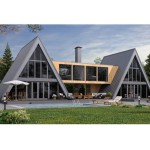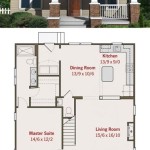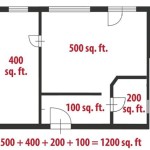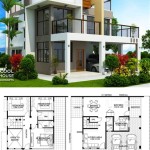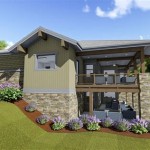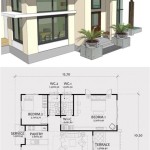Small 2 Bedroom House Plan Ideas 100m2
A 100m2 (approximately 1076 sq ft) footprint offers ample space for a comfortable two-bedroom house. Careful planning and innovative design choices can maximize the available area, creating a functional and stylish home. This article explores various layout ideas and design considerations for a 100m2 two-bedroom house plan.
Open-Plan Living: An open-plan layout combines the living room, dining area, and kitchen into a single, spacious zone. This design enhances the sense of spaciousness and promotes natural light flow throughout the core living areas. It also facilitates interaction and creates a more sociable atmosphere. Strategic placement of furniture and area rugs can delineate the different functional zones within the open plan.
Maximizing Natural Light: Large windows and strategically placed skylights can significantly brighten the interiors and reduce the need for artificial lighting. Consider orienting the house to maximize solar gain in winter while minimizing overheating in summer. Clerestory windows, positioned high on the walls, offer privacy while allowing natural light to penetrate deeper into the space.
Efficient Kitchen Layouts: A well-designed kitchen within a 100m2 house can be both stylish and functional. An L-shaped or U-shaped kitchen layout optimizes counter space and storage. A kitchen island can further enhance functionality by providing additional workspace, storage, and a casual dining area.
Bedroom Placement and Privacy: Locating the bedrooms away from the main living areas enhances privacy. Consider placing them on opposite sides of the house or on a separate floor if the design allows. Each bedroom should ideally have its own closet space. Built-in wardrobes maximize storage and create a streamlined aesthetic.
Bathroom Design: A 100m2 house can comfortably accommodate one or two bathrooms. A single bathroom might serve both bedrooms and guests, while a two-bathroom design offers greater convenience and privacy. Space-saving fixtures like a corner sink or a shower-over-bath combination can optimize the bathroom layout.
Outdoor Living Spaces: Extending the living space outdoors creates a seamless connection with nature. A patio, deck, or balcony can add valuable living space for relaxation and entertainment. Even a small courtyard can provide a private outdoor retreat.
Storage Solutions: Incorporating ample storage is crucial in a smaller home. Built-in wardrobes, under-stair storage, and shelving units can help maximize space and minimize clutter. Consider multi-functional furniture, such as ottomans with storage compartments, to further enhance storage capacity.
Split-Level Designs: If the terrain allows, a split-level design can create distinct zones within the house. For instance, the bedrooms could be located on a slightly elevated level for added privacy. This design can also enhance the visual interest of the house.
Sustainable Design Considerations: Incorporating sustainable features can reduce the environmental impact and lower operating costs. Energy-efficient appliances, insulation, and solar panels can contribute to a more sustainable home. Consider using eco-friendly building materials and water-saving fixtures.
Flexibility and Adaptability: Designing for future needs is essential. Consider incorporating flexible spaces that can be adapted for different uses over time. For example, a spare room can initially serve as a home office or guest room and later be converted into a child's bedroom.
Garage or Carport: If parking is a requirement, consider incorporating a garage or carport into the design. A combined garage and laundry space can save valuable floor area. If space is limited, a carport offers a more cost-effective alternative.
Landscaping: Thoughtful landscaping can enhance the curb appeal and create a welcoming outdoor space. Trees and shrubs can provide shade and privacy, while a small garden can add a touch of color and tranquility.
Local Building Codes and Regulations: It is essential to comply with local building codes and regulations when designing a house. These regulations often dictate setbacks, height restrictions, and other design parameters.
Working with an Architect: Collaborating with an experienced architect is highly recommended. An architect can help develop a design that meets specific needs and preferences, maximizes the available space, and adheres to local building codes.
Budget Considerations: Establishing a realistic budget is crucial before embarking on a building project. The cost of construction can vary significantly depending on the materials, finishes, and complexity of the design.
Material Choices: The selection of building materials impacts both the aesthetics and the cost of construction. Consider the durability, maintenance requirements, and environmental impact of different materials.
Careful planning and consideration of these factors can lead to a well-designed, functional, and comfortable two-bedroom house within a 100m2 footprint.

2 Bedroom House Plan Examples

Small House Plan Ideas For Diffe Area Engineering Discoveries

Small House Plans Tiny Under 100m2 Nethouseplans

Small House Plans 18 Home Designs Under 100m2

House Plans 100m2 Living Room And Summer Terrace 101436

Granny Flat 2 Bedroom Home Plan 111 Sbhlh 99 M2 1070 Sq Foot Concept House Plans For

Small House Plans Tiny Under 100m2 Nethouseplans

2 Bedroom Modern Apartment Design Under 100 Square Meters Great Examples

Small House Plans Tiny Under 100m2 Nethouseplans

House Plans Under 1000 Square Feet
Related Posts

